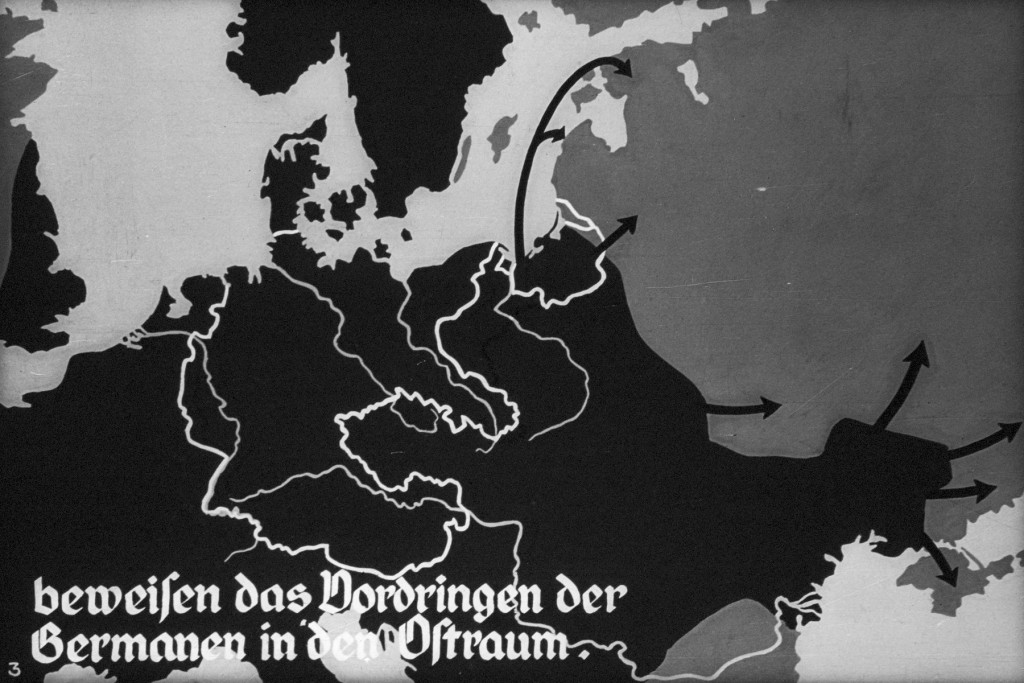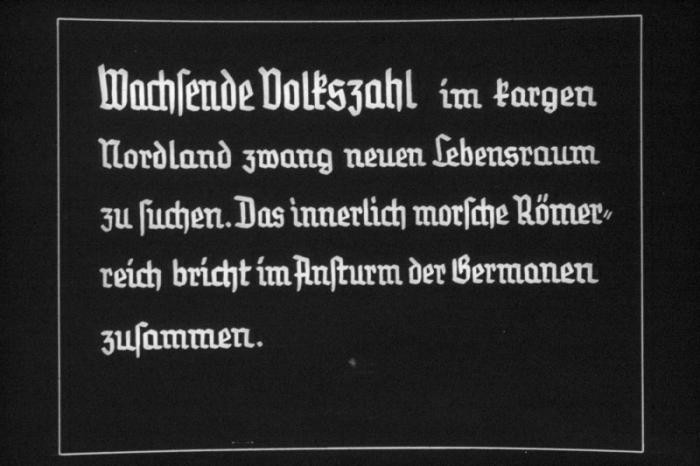
Lebensraum
The concept of Lebensraum—or “living space”—served as a critical component in the Nazi worldview that drove both its military conquests and racial policy.

Background
Renowned German geographer Friedrich Ratzel coined the term in 1901. He and many others at the turn of the century believed that a nation had to be self-sufficient in terms of resources and territory (a concept known as autarky) to protect itself from external threats.
Ratzel and others were also deeply influenced by the new work of Charles Darwin and his theory of natural selection. However, they mistakenly applied the concept to nation states, contending that, like the species Darwin studied, nations too struggled over resources for survival where only the fittest would win. Ratzel argued that the development of a people was influenced by their geographic situation, and that a society who effectively adapted to one geographic territory would logically expand the borders of their country into other territory. Pointing to the British and French Empires and to American “Manifest Destiny,” Ratzel contended that Germany required overseas colonies to relieve German over-population. The East presented another logical outlet for growth.
Long before the Nazi period, many Germans looked to eastern Europe as the natural source of their Lebensraum. Beginning in the Middle Ages, the social and economic pressures of over-population in the German states had led to a steady colonization of Germanic peoples in eastern Europe. Increasingly by the twentieth century, however, scholars and the public alike began to view the East as a region whose vast natural resources were wasted on racially “inferior” peoples like Slavs and Jews. A biological view of Lebensraum resonated with an inaccurate historical view of the German role in the East during the ancient and medieval periods. Expansionists clung to this mythic German “history” in eastern Europe, arguing that these regions were actually lost German lands. As one German publication stated in 1916, “we Germanic people build up—create—the Slav broods and dreams—like his earth.”
Lebensraum and World War I
Ironically, during World War I, the German state achieved its goal of conquering Lebensraum in the East, extending German dominance as far east as Minsk and constructing a military dictatorship dedicated to exploiting and altering the landscape. The eventual German defeat in World War I resulted in not only the loss of all its overseas colonies but also the eastern military “kingdom” known as Ober Ost. The war and accompanying deep sense of loss heightened the German conviction that its salvation lay in the East.
Hitler, himself a World War I veteran, recognized the effect that the British naval blockade and materiel shortages at home had had on the home front, weakening morale and increasing civilian suffering. This contributed, in many conservative Germans' minds, to the “Stab-in-the-back” explanation for Germany's defeat which blamed the loss not on military failures but on Jews, liberals, war profiteers, and others on the home front who had compromised the war effort.
Hitler vowed that Germany would never again be defeated by a lack of resources. In his unpublished second book, he lamented that “the German people is today even less in a position than in the years of peace to feed itself from its own land and territory.” In 1936, he glowingly spoke of the “incalculable raw materials” in the Urals, the “rich forests” of Siberia, and the “incalculable farmlands” of the Ukraine.
Lebensraum and the Nazi State
In the Nazi state, Lebensraum became not just a romantic yearning for a return to the East but a vital strategic component of its imperial and racist visions. For the Germans, eastern Europe represented their “Manifest Destiny.” Hitler and other Nazi thinkers drew direct comparisons to American expansion in the West. During one of his famous “table talks,” Hitler decreed that “there's only one duty: to Germanize this country [Russia] by the immigration of Germans and to look upon the natives as Redskins.”
The concrete measures taken by the Nazis to secure their Lebensraum demonstrate the very real power of ideas. Again, in his second book, Hitler wrote that Germany should “[concentrate] all of its strength on marking out a way of life for our people through the allocation of adequate Lebensraum for the next one hundred years.” Naturally, the inferior races that occupied this region must be removed, both Slavs and Jews.
The drive to clear the East of inferior populations in preparation for German colonization led to intensive planning for the mass starvation of over 30 million people there. Policy guidelines issued before the invasion of the Soviet Union stated unequivocally that “many tens of millions of people in this territory will become superfluous and will have to die or migrate to Siberia… With regard to this, absolute clarity must reign.” Known as the Generalplan Ost, this set of economic and demographic plans placed the necessity for Lebensraum and the colonization of the East at the center of the invasion. By blaming Jews and Bolshevists for the “backwardness” of the region, the plans also reinforced other forms of Nazi antisemitism demanding the removal of Jews from the territory and eventually their physical destruction.
The concept of Lebensraum was not solely responsible for the Holocaust, but powerfully connected a variety of imperialist, nationalist, and racist currents that would contribute to the murder of the Jews of Europe.

